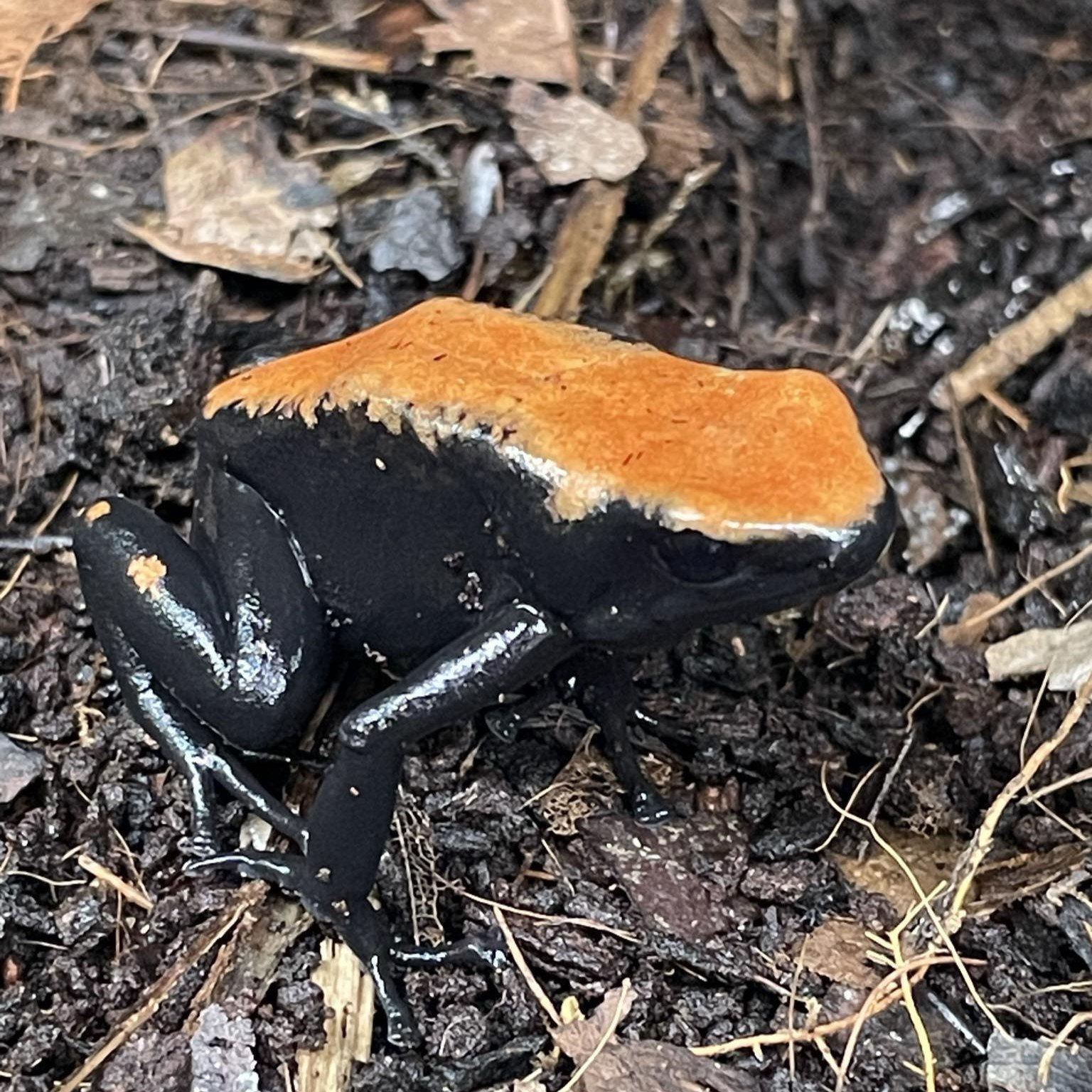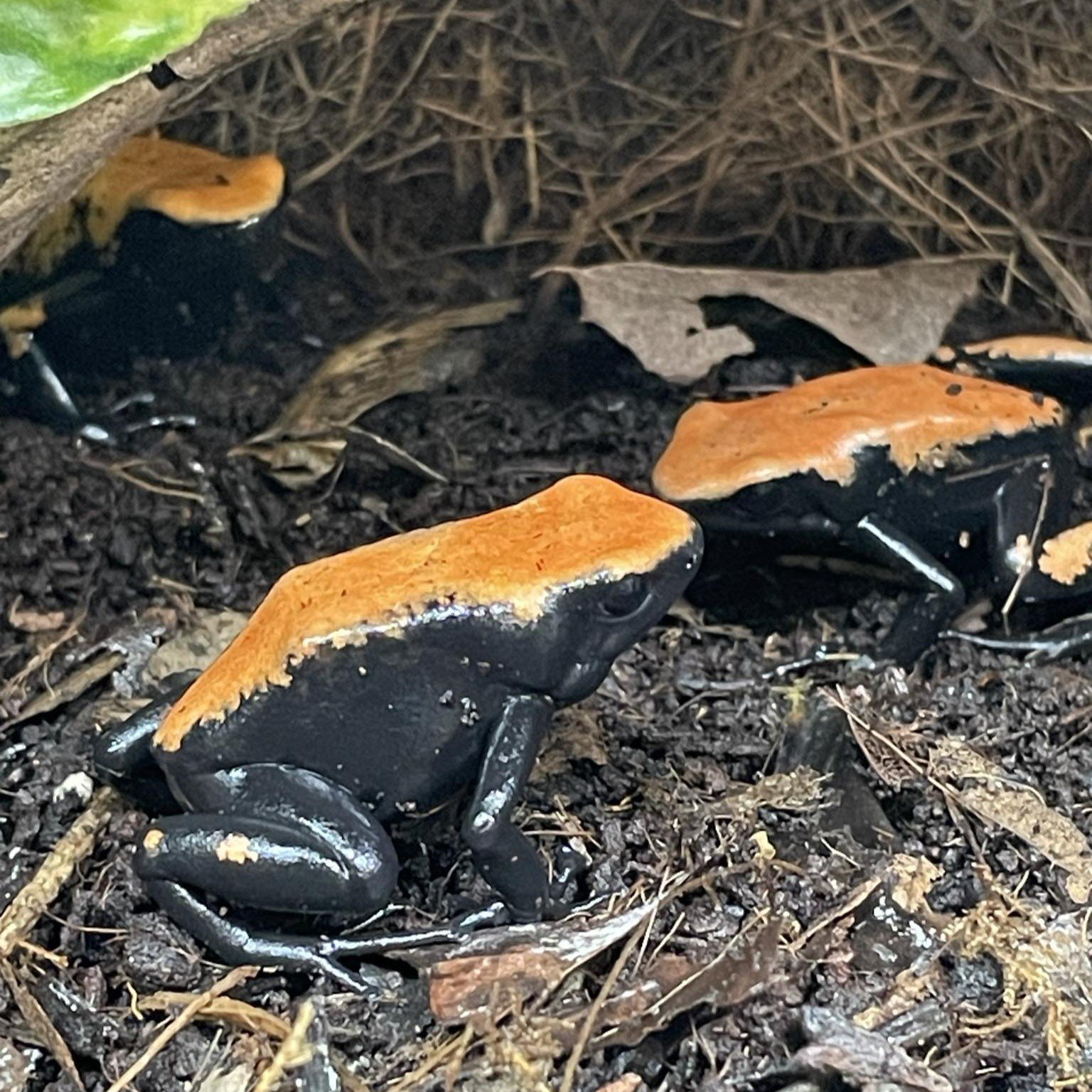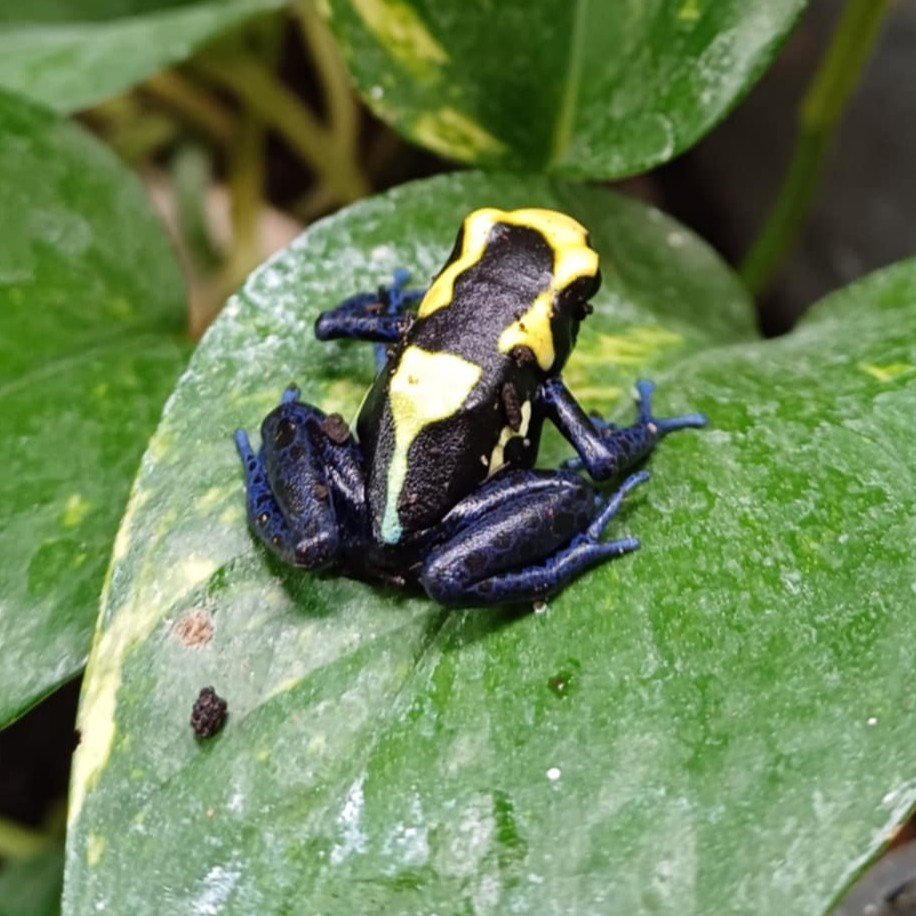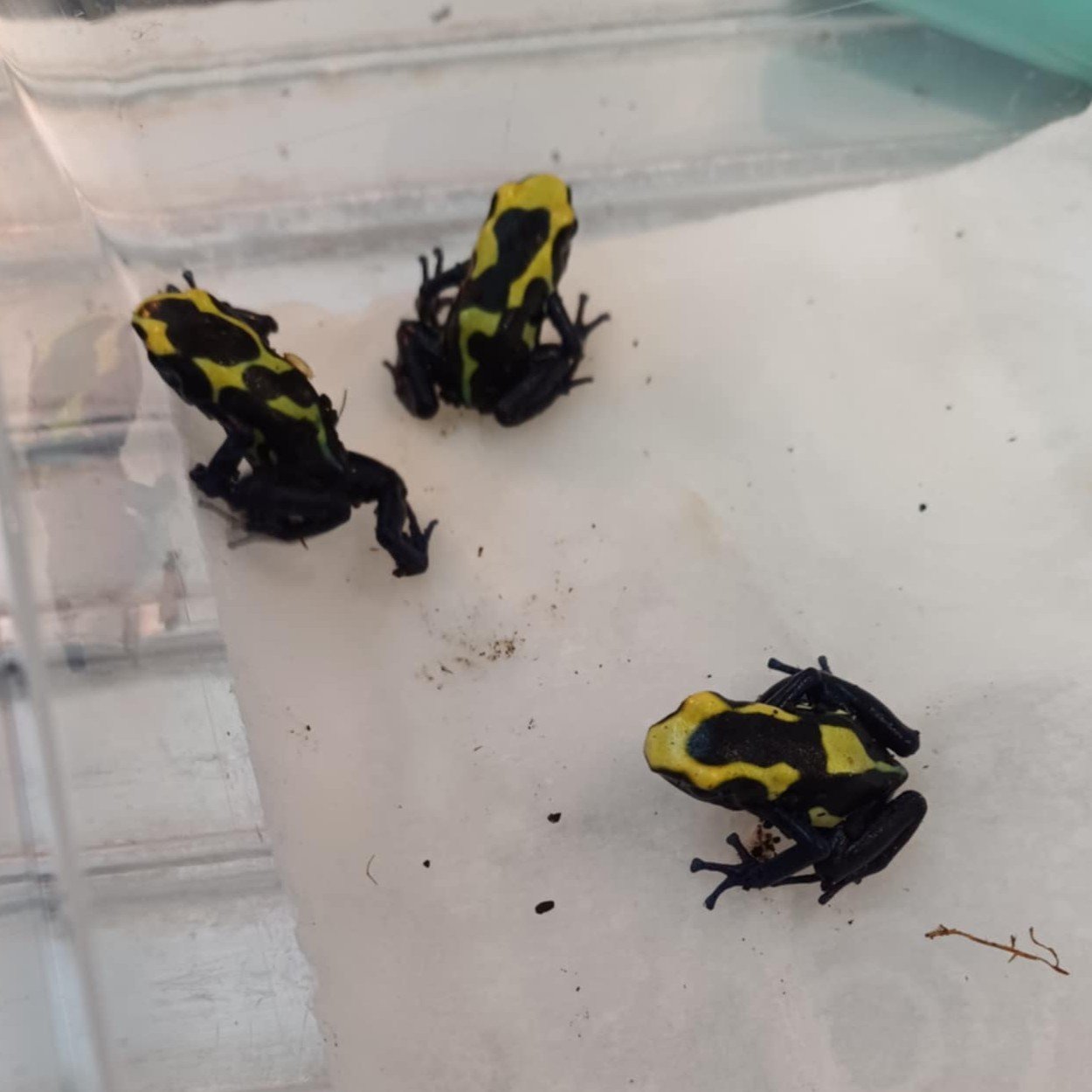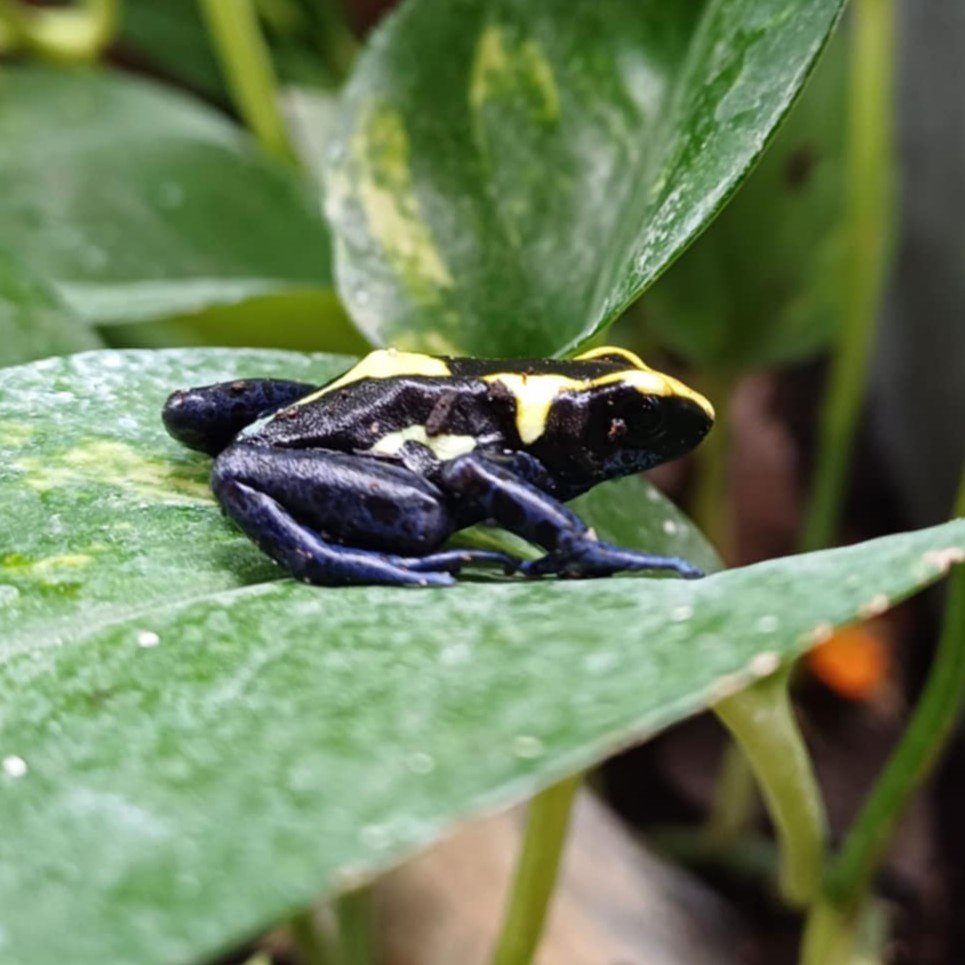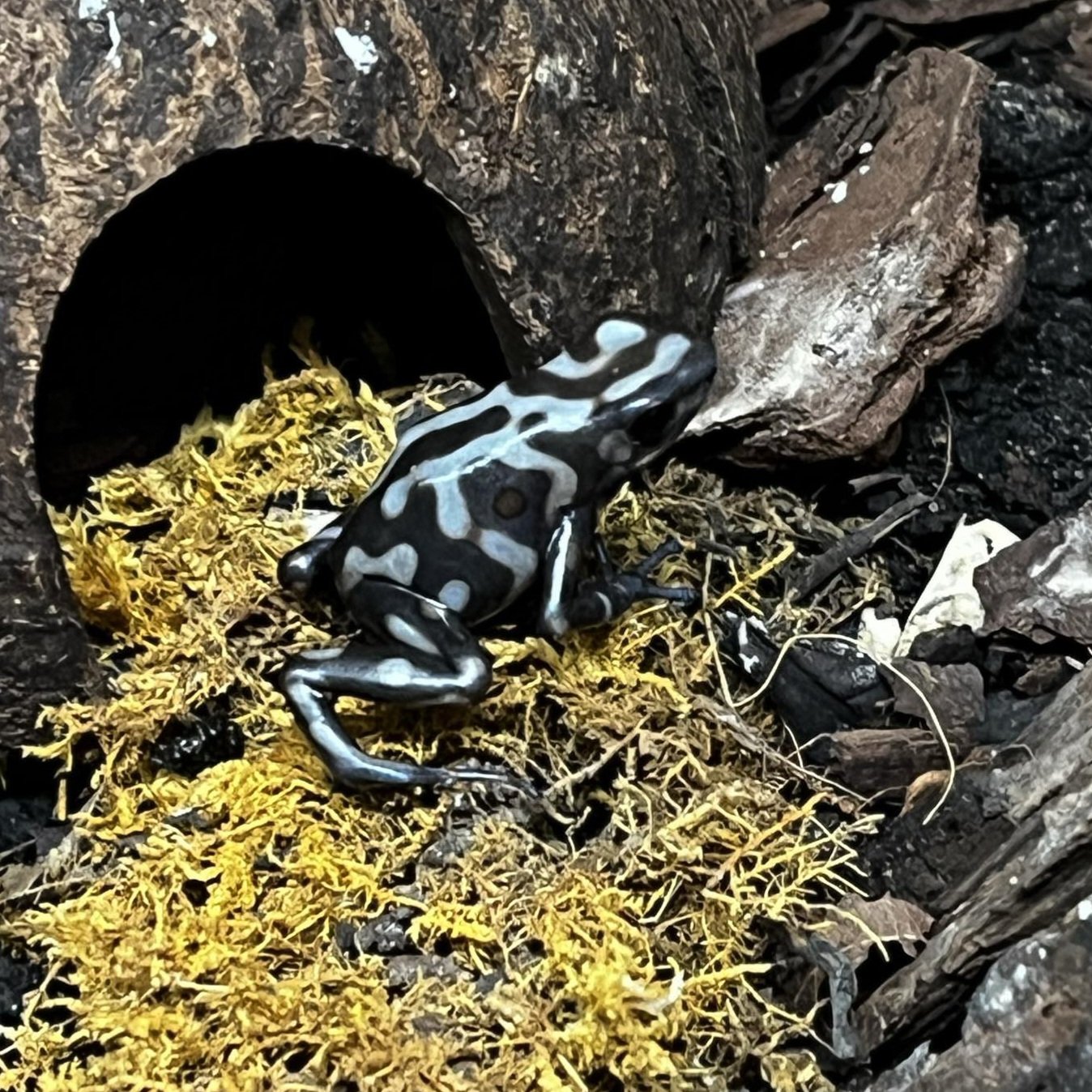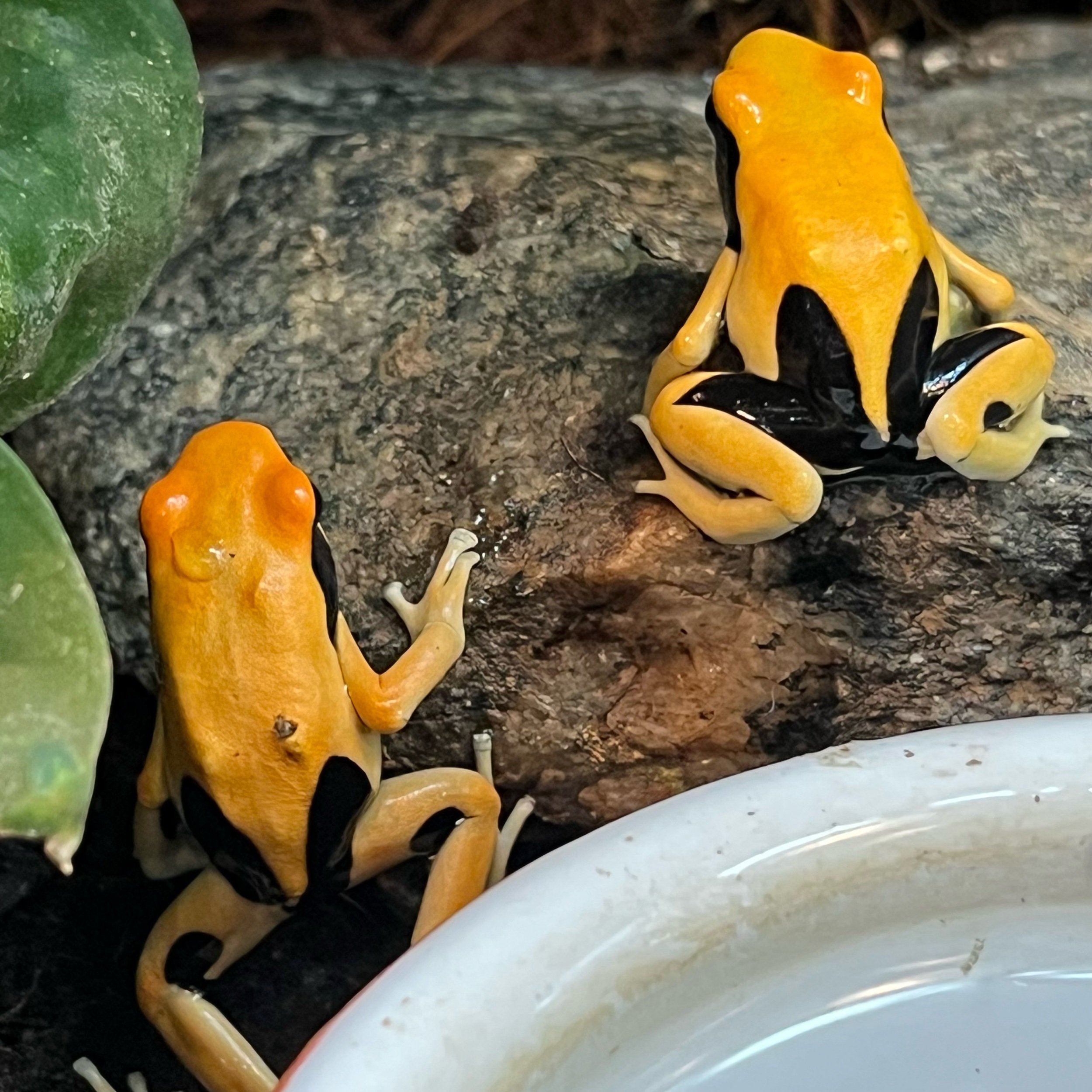Female Pair Of Red Splashback Dart Frogs For Sale
Red Splashback Dart Frogs (Adelphobates Galactonotus) are a striking species with a brilliant contrast between the black and red on their body!
Photos taken July 2024
Currently for sale in our Bracknell reptile shop
Age: CB23 (approx 1 year old)
Price is for a pair
Sex: Female
Suitability: Well-researched beginner
Handling
Don’t let the name scare you, poison dart frogs are only dangerous when they consume their wild diet. In the wild, this species are the most toxic amphibian on the planet!
In captivity they are safe to keep, although we avoid touching them unless essential for the frog’s well-being, as their skin is very absorbent.
Enclosure recommendations
A bioactive glass terrarium with plenty of floor space with leaf litter, branches and live plants is ideal. UV lighting is beneficial. Any heating should be thermostatically controlled.
Red Splashback Dart Frogs (Adelphobates Galactonotus) are a striking species with a brilliant contrast between the black and red on their body!
Photos taken July 2024
Currently for sale in our Bracknell reptile shop
Age: CB23 (approx 1 year old)
Price is for a pair
Sex: Female
Suitability: Well-researched beginner
Handling
Don’t let the name scare you, poison dart frogs are only dangerous when they consume their wild diet. In the wild, this species are the most toxic amphibian on the planet!
In captivity they are safe to keep, although we avoid touching them unless essential for the frog’s well-being, as their skin is very absorbent.
Enclosure recommendations
A bioactive glass terrarium with plenty of floor space with leaf litter, branches and live plants is ideal. UV lighting is beneficial. Any heating should be thermostatically controlled.
Red Splashback Dart Frogs (Adelphobates Galactonotus) are a striking species with a brilliant contrast between the black and red on their body!
Photos taken July 2024
Currently for sale in our Bracknell reptile shop
Age: CB23 (approx 1 year old)
Price is for a pair
Sex: Female
Suitability: Well-researched beginner
Handling
Don’t let the name scare you, poison dart frogs are only dangerous when they consume their wild diet. In the wild, this species are the most toxic amphibian on the planet!
In captivity they are safe to keep, although we avoid touching them unless essential for the frog’s well-being, as their skin is very absorbent.
Enclosure recommendations
A bioactive glass terrarium with plenty of floor space with leaf litter, branches and live plants is ideal. UV lighting is beneficial. Any heating should be thermostatically controlled.

